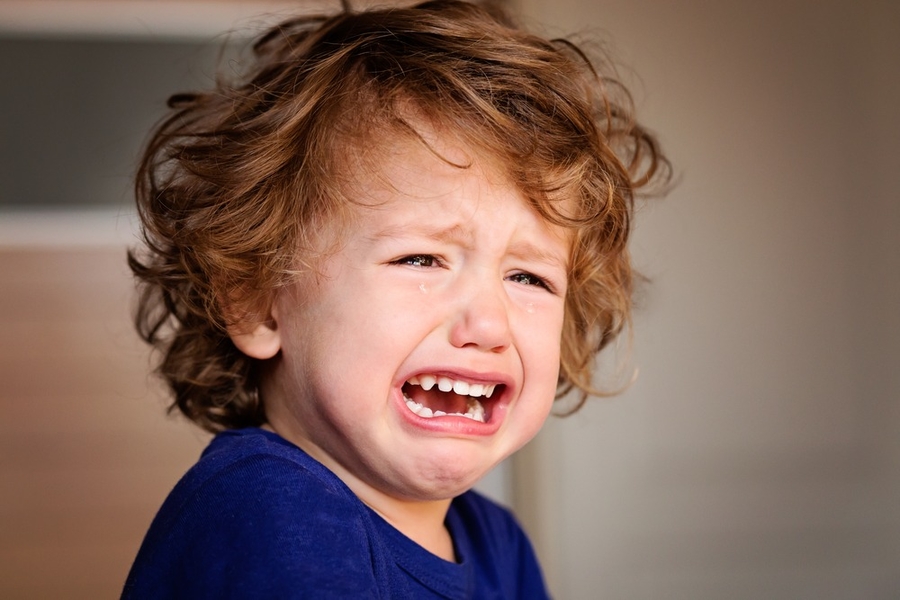
Separation Anxiety
22 Jan 2018 | 4 min Read
Babychakra
Author | 1369 Articles
Understanding separation anxiety
At 6 months, a baby recognizes its mother or the caretaker on which it is dependent. The baby gets irritable or cries when the mother or care-taker is out of its sight due to the fear of parting. This is called as separation anxiety. Separation anxiety symptoms are at their peak in kids between 8-10 months of age.
Stranger anxiety in infants is also common at this stage. Babies get frightened and cry when they are in a new place or meet new people.
Detachment anxiety resolves by the age of one and a half to two years when the child starts understanding that its mother or caretaker can stay away from her but will return after a certain time.
In some cases, toddlers and older children present with severe separation anxiety during the time of stressful situations such as staying away from the parents for school trips or night camping. The anxiety of the child is in excessive proportion to what is expected in the actual situation, which distresses the child. This condition is called as separation anxiety disorder (SAD).
According to research studies, childhood anxiety is the precursor for adult anxiety and depression disorder.
Symptoms of separation anxiety in children
Separation anxiety is a type of childhood anxiety disorder and differs in presentation of symptoms according to age.
- Signs of anxiety in toddlers are characterized by unrelated fears about harm or injury to the attachment figure.
- The child has separation anxiety due to which he/she refuses to attend school.
The child keeps worrying about untoward events that might harm the attachment figure, which prevents him/her from leaving the home or staying away from the mother or caretaker. - In older children between 9 to 12 years of age, separation anxiety presents in the form of separation distress or anguish on parting from the attachment figure, such as night camping, overnight school trips, etc.
- Older children of age group 12 to 16 years also present with frequent non-attendance in school.
Separation anxiety in adolescence is characterized by physical symptoms in addition to refusal to attend school. These include headache, dizziness, stomach-ache, backache, vomiting, etc. - Other symptoms of separation anxiety in toddlers include fearful dreams at night, bedwetting, child refuses to sleep alone without his/her mother or caretaker.
What causes separation anxiety in children?
Family plays an important role in the development of separation anxiety symptoms in a child. Unhealthy environment in the family like alcoholism or hyper-anxious mothers, arrival of a younger sibling, etc. are stressful for the child. Evidence of anxiety or depression disorders among family members can lead to separation anxiety disorder in kids.
Strategies to help children with separation anxiety.
Toddlers are at a higher risk than older children to suffer from separation anxiety. For overcoming anxiety, the child should be motivated to trust other people at home in the absence of the attachment figure. The child should be able to accept that his/her mother will return after a period of absence.
Various methods are useful in building trust in the child suffering from separation anxiety.
1. Leaving the baby with a trusted person initially for a short time period helps the baby to trust the person in your absence and will also accept the fact that you will return.
2. Avoid leaving your child when she is hungry, tired or restless. This makes the child more prone to anxiety symptoms.
3. Discuss with the child about something that he/she can look forward to when you return. This will keep the baby’s mind occupied in your absence.
4. The person taking care of the baby in the absence of the attachment figure should quickly divert the child’s attention in different activities without much delay after a gentle goodbye.
5. Leaving after playing for a few minutes with the baby in a new place helps the baby to get adjusted to the new environment.
6. Remind the child about the time you will return, e.g., after nap or after lunch, etc.
7. Objects like a stuffed toy, blanket, scarf, etc. reminds and comforts the baby in the absence of the attachment figure.
8. Older children should be motivated to recognize the signs of separation anxiety and encouraged to divert their minds in different activities.
9. Breathing techniques are helpful in calming the anxious mind, especially at the time of sever distress.
10. Preparing the child in case of a house change or new place helps the older kid in adjusting with the new environment.
Disclaimer: The information in the article is not intended or implied to be a substitute for professional medical advice, diagnosis or treatment. Always seek the advice of your doctor.
Also read: 9 Hacks To Reduce Separation Anxiety In Kids (0-5 yrs) As Tried Out By A Mom Herself
A


Related Topics for you
Suggestions offered by doctors on BabyChakra are of advisory nature i.e., for educational and informational purposes only. Content posted on, created for, or compiled by BabyChakra is not intended or designed to replace your doctor's independent judgment about any symptom, condition, or the appropriateness or risks of a procedure or treatment for a given person.
